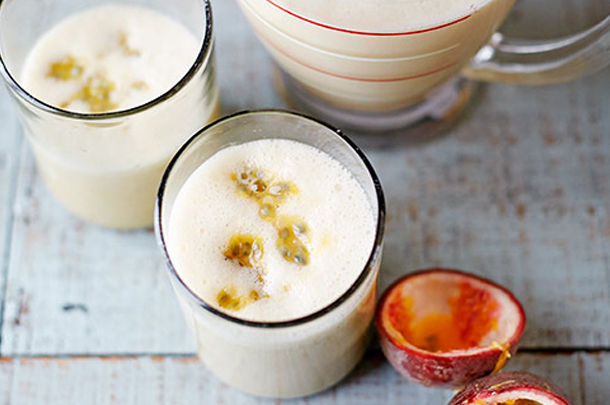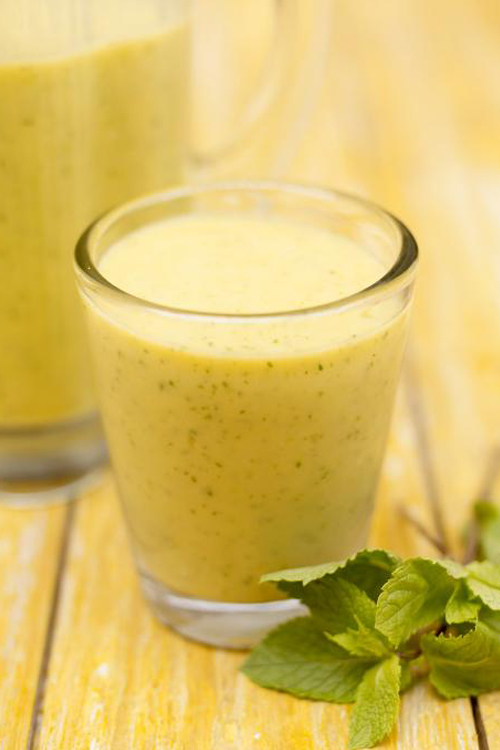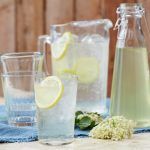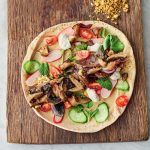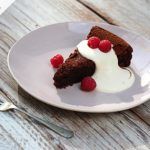This month on jamieoliver.com has been all about drinks. However, as I doubt my fellow writers will be coming up with cleansing smoothies, I’ve decided to write about healthy drinks. With that in mind, a good place to start is water.
There is a lot of confusion about how much water we need to drink, and that’s probably because it varies depending on our body size, how much exercise we do and how warm it is. As a rough guide, women should be aiming for a minimum of 1.6 litres of liquid a day (around eight glasses of 200ml) and men 2 litres (10 glasses of 200ml). The best choices are water, milk and fruit juices, although tea and coffee also count. Water is great because it has no calories, milk because of various minerals (more later) and fruit because it can count towards your five a day (more on that later too, though).
Now, I know you’re all thinking: “But what about alcohol?”. Well, sadly alcohol is not included, because it dehydrates you! To function properly we all need to keep hydrated, so keep a check on how much water you’re drinking each day, because often it’s easy to confuse hunger with thirst. If you find it a struggle to drink plain water, you could add some fresh lemon or lime, or try Jamie’s fruit drinks every so often – his mango cooler and strawberry slushie are delicious.
It’s all too common that people struggle to get a minimum of five fruits and vegetables into their daily diet. In the last national diet and nutrition survey, it was reported that adults aged between 19 and 64 consumed on average 4.1 portions of fruit and vegetables each day, just falling short of the recommended amount. If you struggle to reach this target, having juices and smoothies may help you edge closer. Just remember, fruit and vegetable juices only count as one of your 5 a day, however much you have.
Usually during the juicing process, the skin of the fruit or vegetable is removed, which is often where the nutrients such as fibre are contained, which then makes your juice a more concentrated form of natural sugar. So it’s still best to eat, not drink, your fruit and veggies, wherever possible. When you are making your own juice, don’t forget that you can juice vegetables as well as fruit. Spinach, kale, celery, carrots and beetroot all work well, especially when pepped up with warming flavours like ginger and cinnamon, or a kick of fresh mint.
There are a whole host of different types of milk available these days, including almond, hazelnut, soya and rice. So try mixing up the milk in your next fruit smoothie recipe. There is a great almond milk, banana and passion fruit recipe on the Jamie Magazine website . My personal favourite is hazelnut milk blitzed up with a small banana, a pinch of cocoa and some cinnamon. If you’re lactose intolerant, then soya milk is a good alternative to cow’s milk, as it is often fortified with vitamins and minerals. This makes it a good source of calcium, which is important for strong bones and teeth. A drink like this is also great straight after exercise because it contains carbohydrates and protein, both needed to replenish and repair the body.
According to the British Soft Drinks Association, as a nation we drank 6,440 million litres of carbonated drinks in 2012. This includes colas, lemonade and energy drinks, and equates to over 100 litres per person! Many fizzy drinks contain empty calories, added sugar or glucose syrup. Too much sugar can weaken your teeth, contribute to weight gain and, in some cases, result in the development of type-2 diabetes. In October 2013 a sugar tax was passed in Mexico, so a levy of 10% per litre has been added to sugar-sweetened drinks. The rest of the world now watches with curiosity to see what impact this has on the country, before other countries consider implementing this tax to see whether it can help halt the soaring rates of obesity and diabetes around the world.
Similar to fizzy drinks, alcohol is also a source of calories and offers no nutrient value. Now, I’m not suggesting to avoid booze altogether, but it’s always better to eat your calories rather than drink them. If you are a regular drinker then stick to the NHS guidance of no more than 2-3 and 3-4 units per day for women and men respectively.
As ever, I’m a big advocate of “everything in moderation”, and the fact that a balanced diet and exercise is the key to a healthy lifestyle.
